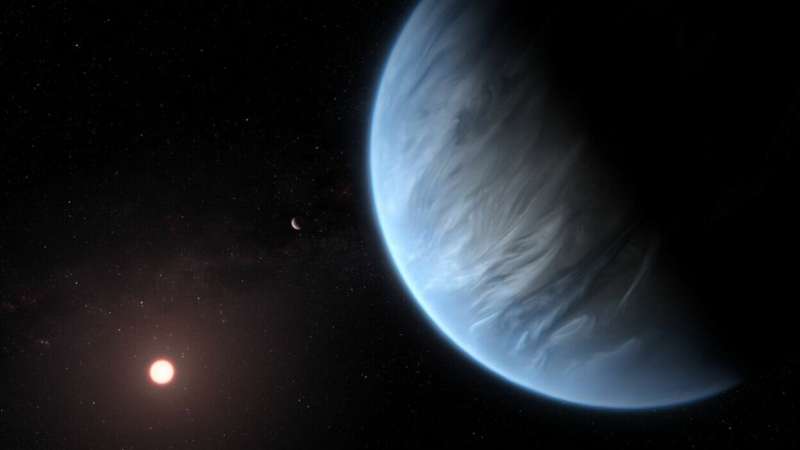This article has been reviewed according to Science X's editorial process and policies. Editors have highlighted the following attributes while ensuring the content's credibility:
fact-checked
peer-reviewed publication
trusted source
proofread
Astronomers still scratching their heads over population of ocean-world exoplanets

In a recent study submitted to the Astrophysical Journal Letters, an international team of researchers led by the University of California, Los Angeles (UCLA) examine the potential for water-worlds around M-dwarf stars. Water-worlds, also known as ocean worlds, are planets that possess bodies of liquid water either directly on its surface, such as Earth, or somewhere beneath it, such as Jupiter's moon, Europa and Saturn's moon, Enceladus.
For the study, the researchers focused on super-Earths and sub-Neptunes with hydrogen (H)/helium (He) atmospheres for close-in exoplanets orbiting M-dwarf stars in an attempt to calculate their total water mass. So, what were the most significant results pertaining to water-worlds around M-dwarf stars?
"Those planets containing a significant fraction of their total mass (10%–50%) in water might be extremely rare or nonexistent," Dr. James Owen, who is a Senior Lecturer in Exoplanet Physics at Imperial College London and a co-author on the study, recently told Universe Today. "This would imply planet formation is fairly uniform across a wide range of stellar masses, producing the same type of planets: terrestrial worlds that acquired a few percent by mass of hydrogen gas from the accretion disk around the young star."
Ultimately, the researchers concluded that while the existence of water-world populations "remains elusive," they did offer possible avenues for garnering more conclusive results pertaining to water-world populations. These include searching for the presence of hydrogen and helium around low-mass exoplanets and measuring an exoplanet's age to better determine their long-term evolution. So, what future studies are in the works for garnering more conclusive results?
"This will come from JWST [James Webb Space Telescope] observations of sub-Neptunes—if the results are consistent with large mass fractions of water in their atmosphere (i.e., steam atmospheres) then it suggests that the planets are indeed water-worlds," Dr. James Rogers, who is a Postdoctoral Scholar at UCLA and lead author of the study, recently told Universe Today. "However, if the atmospheres are consistent with being dominated by H/He, then it suggests that they are not water-worlds."
Journal information: Astrophysical Journal Letters
Provided by Universe Today





















